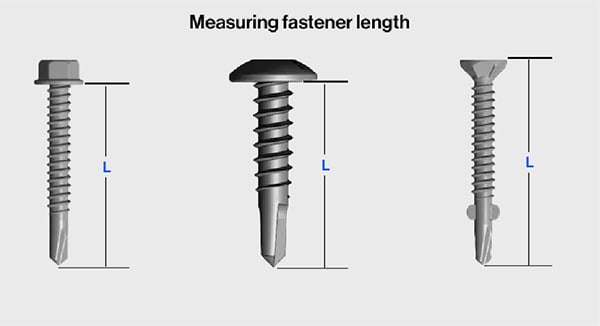
How do I select the correct self-drilling fastener?
- Read time: 4 minutes
- Date: 24 Jun 2021
- Rainscreen & Façades
- Flat Roofing
- Sheeting & Cladding
Self-drilling fasteners come in numerous shapes and sizes. It is therefore important to select the correct fastener for the application. Using the wrong fastener could, in the worst-case scenario, cause failure and all the implications that go with this, or at the least, result in wasted time on site.
When selecting self-drilling fasteners, there are some important factors to consider. This includes:
Environment
Building life &/or warranty required
Material you are fixing into
Material to be fixed
Head style
Aesthetics
How the environment affects fasteners
Fasteners are manufactured from carbon steel and different grades of stainless steel, which will perform in different ways, depending on the conditions.
It's therefore important to start by considering the environment. Will the fastener (or any part of it) be subject to the atmosphere? If the project is in an urban area (sometimes referred to as C3 Medium - see BS EN ISO 12944), an industrial or coastal area (C4 High), or a marine environment (C5 Very High), then stainless-steel fasteners would generally be recommended. As well as considering the external environment the building use must also be considered. If there is high humidity in the building, stainless steel fasteners should be used. Swimming pools and chemical plants can produce chlorine vapour which is extremely corrosive. Fasteners used in these applications must be manufactured from a high grade of stainless steel such as 1.4529 to prevent stress corrosion cracking.
Building life &/or warranty
Fasteners are normally considered to be a component that cannot easily be replaced and must therefore be designed to last for the same period as the structure they are securing. Sometimes a warranty will also be required. This will often dictate which fastener material should be used, with stainless steel being the most durable and therefore backed up by a longer warranty.
Warranties will depend on certain conditions being met (for example, correct specification for the environment) so always refer to the manufacturer’s warranty for full details.
Material you are fixing into
Self-drilling fasteners are generally used for fixing into steel sections. Self-drilling fasteners have different drill points for different thicknesses of metal. Generally, this is divided into three sections. Light section or cold-rolled steel (1.2mm – 3mm thick), heavy section or hot-rolled steel (4mm – 12mm thick), and super heavy section (up to 25mm thick). Select the drill point to suit the metal you are fixing too.
Materials to be fixed
Self-drilling fasteners are supplied in different lengths. When selecting the fastener length, you must take into account the thickness of the material to be fixed and any existing build-up if relevant. Most manufacturers publish a maximum and minimum fixture thickness (sometimes referred to as the build-up) for the different lengths available. At this stage, you also need to consider if a weather sealing washer is required. Weather sealing washers are available in different diameters with sizes of 15mm and below being used for vertical cladding and sizes greater than 15mm being used for roofing. A 29mm washer would be used on a rooflight.

Different head styles and aesthetics
Self-drilling fasteners are manufactured with a number of different head styles including hex head, bi-hex moulded head, low-profile (pan) head, countersunk head to name some of the common ones. The selection of head style is based on aesthetics, drivability and the application. For example, if you were fixing timber to steel you might use a countersunk head.

Some self-drilling fasteners have a high thread. These are generally used for securing composite panels to ensure an effective seal even under loading.
Which self-drilling fasteners should I use to fix a composite panel?







